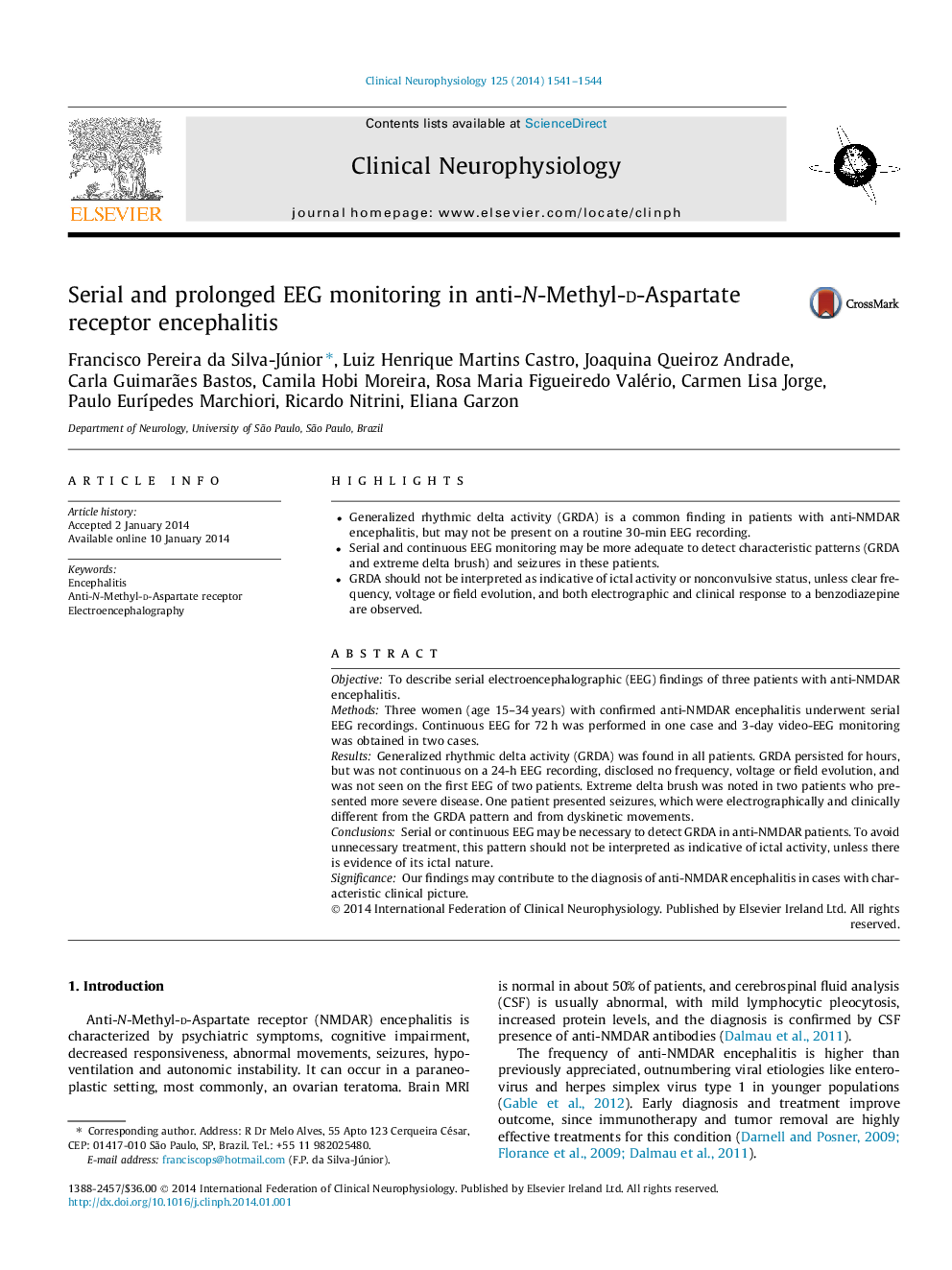| Article ID | Journal | Published Year | Pages | File Type |
|---|---|---|---|---|
| 3043481 | Clinical Neurophysiology | 2014 | 4 Pages |
•Generalized rhythmic delta activity (GRDA) is a common finding in patients with anti-NMDAR encephalitis, but may not be present on a routine 30-min EEG recording.•Serial and continuous EEG monitoring may be more adequate to detect characteristic patterns (GRDA and extreme delta brush) and seizures in these patients.•GRDA should not be interpreted as indicative of ictal activity or nonconvulsive status, unless clear frequency, voltage or field evolution, and both electrographic and clinical response to a benzodiazepine are observed.
ObjectiveTo describe serial electroencephalographic (EEG) findings of three patients with anti-NMDAR encephalitis.MethodsThree women (age 15–34 years) with confirmed anti-NMDAR encephalitis underwent serial EEG recordings. Continuous EEG for 72 h was performed in one case and 3-day video-EEG monitoring was obtained in two cases.ResultsGeneralized rhythmic delta activity (GRDA) was found in all patients. GRDA persisted for hours, but was not continuous on a 24-h EEG recording, disclosed no frequency, voltage or field evolution, and was not seen on the first EEG of two patients. Extreme delta brush was noted in two patients who presented more severe disease. One patient presented seizures, which were electrographically and clinically different from the GRDA pattern and from dyskinetic movements.ConclusionsSerial or continuous EEG may be necessary to detect GRDA in anti-NMDAR patients. To avoid unnecessary treatment, this pattern should not be interpreted as indicative of ictal activity, unless there is evidence of its ictal nature.SignificanceOur findings may contribute to the diagnosis of anti-NMDAR encephalitis in cases with characteristic clinical picture.
